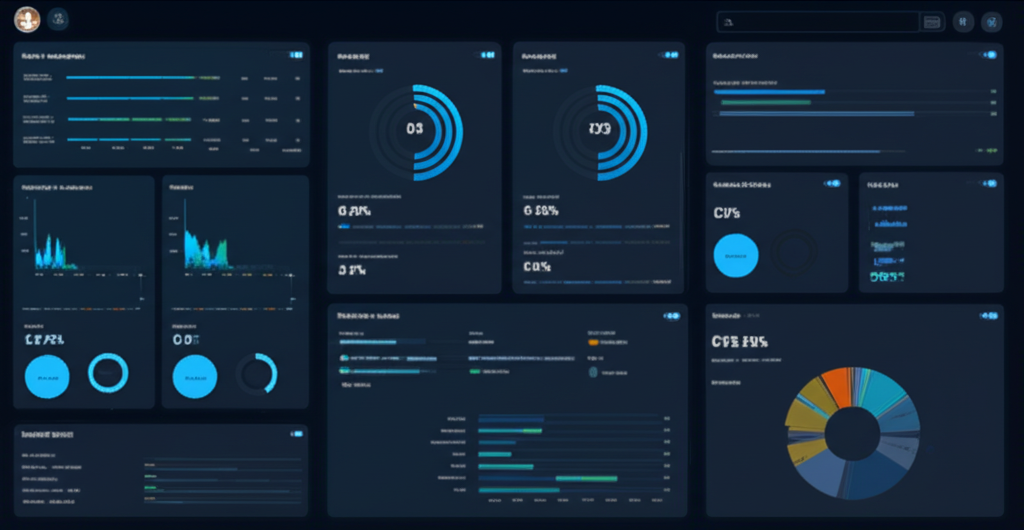Implementing Enterprise-Grade Security in Document Processing
A comprehensive guide to deploying datakraft with enterprise security requirements, including SOC 2 compliance and data governance best practices.

Enterprise document processing involves handling some of the most sensitive information in an organization - from financial records to customer data, intellectual property to regulatory filings. Implementing AI-powered document processing at enterprise scale requires a comprehensive security framework that protects data throughout the entire processing pipeline.
This guide provides a detailed roadmap for implementing enterprise-grade security in document processing systems, based on real-world deployments and industry best practices.
Enterprise Security Requirements
Enterprise organizations must address multiple layers of security requirements:
- Data Protection: Encryption at rest and in transit, secure key management
- Access Control: Role-based permissions, multi-factor authentication, privileged access management
- Compliance: SOC 2, HIPAA, GDPR, industry-specific regulations
- Audit and Monitoring: Complete audit trails, real-time monitoring, incident response
- Data Governance: Data classification, retention policies, privacy controls
Security Architecture Framework
1. Zero Trust Architecture
Implement a zero trust model where every document processing request is authenticated and authorized, regardless of source or location.
2. Defense in Depth
Multiple layers of security controls protect against various threat vectors:
- Network security (firewalls, VPNs, network segmentation)
- Application security (secure coding, input validation, output encoding)
- Data security (encryption, tokenization, data loss prevention)
- Identity security (IAM, MFA, privileged access management)
3. Secure Development Lifecycle
Security must be built into the document processing system from the ground up, not added as an afterthought.
Data Protection and Encryption
Encryption at Rest
All documents and extracted data must be encrypted using industry-standard encryption algorithms (AES-256). Key management should follow enterprise key management best practices:
- Hardware Security Modules (HSMs) for key storage
- Regular key rotation policies
- Separation of duties for key management
- Secure key backup and recovery procedures
Encryption in Transit
All data transmission must use TLS 1.3 or higher with perfect forward secrecy. This includes:
- API communications
- Database connections
- Inter-service communications
- Administrative access
Data Tokenization
For highly sensitive data, implement tokenization to replace sensitive information with non-sensitive tokens during processing.
Access Control and Identity Management
Role-Based Access Control (RBAC)
Implement granular permissions based on job functions:
- Document Processors: Can upload and process documents
- Data Analysts: Can view processed data and reports
- Administrators: Can configure system settings and user permissions
- Auditors: Read-only access to audit logs and compliance reports
Multi-Factor Authentication
Require MFA for all user access, with stronger authentication for privileged accounts:
- Hardware tokens for administrators
- Biometric authentication for high-security environments
- Risk-based authentication for varying security contexts
Privileged Access Management
Implement just-in-time access for administrative functions and maintain detailed logs of all privileged activities.
Compliance and Regulatory Requirements
SOC 2 Type II Compliance
Implement controls across five trust service criteria:
- Security: Protection against unauthorized access
- Availability: System operational availability
- Processing Integrity: Complete and accurate processing
- Confidentiality: Protection of confidential information
- Privacy: Protection of personal information
GDPR Compliance
For organizations processing EU personal data:
- Data minimization and purpose limitation
- Right to erasure (right to be forgotten)
- Data portability and access rights
- Privacy by design and by default
- Data Protection Impact Assessments (DPIAs)
Industry-Specific Compliance
- HIPAA: For healthcare document processing
- PCI DSS: For payment card information
- SOX: For financial reporting documents
- FERPA: For educational records
Monitoring and Incident Response
Security Information and Event Management (SIEM)
Implement comprehensive logging and monitoring:
- Real-time security event correlation
- Automated threat detection and alerting
- Integration with existing security operations centers
- Machine learning-based anomaly detection
Audit Logging
Maintain immutable audit logs of all system activities:
- User authentication and authorization events
- Document upload and processing activities
- Data access and modification events
- System configuration changes
- Administrative actions
Incident Response Plan
Develop and regularly test incident response procedures:
- Incident classification and escalation procedures
- Communication plans for stakeholders
- Forensic investigation capabilities
- Business continuity and disaster recovery
Data Governance and Privacy
Data Classification
Implement automated data classification to identify and protect sensitive information:
- Public: Information that can be freely shared
- Internal: Information for internal use only
- Confidential: Sensitive business information
- Restricted: Highly sensitive information requiring special handling
Data Retention and Disposal
Implement automated data lifecycle management:
- Retention policies based on legal and business requirements
- Secure data disposal procedures
- Regular data inventory and cleanup
Deployment Models and Security Considerations
Cloud Deployment
For cloud-based deployments:
- Shared responsibility model understanding
- Cloud security posture management
- Data residency and sovereignty requirements
- Cloud access security broker (CASB) integration
On-Premises Deployment
For on-premises deployments:
- Physical security controls
- Network segmentation and isolation
- Infrastructure hardening
- Patch management and vulnerability scanning
Hybrid Deployment
For hybrid environments:
- Consistent security policies across environments
- Secure connectivity between cloud and on-premises
- Unified identity and access management
- Cross-environment monitoring and logging
Security Testing and Validation
Penetration Testing
Regular penetration testing should cover:
- Application security testing
- Network security assessment
- Social engineering testing
- Physical security evaluation
Vulnerability Management
Implement continuous vulnerability management:
- Automated vulnerability scanning
- Risk-based prioritization
- Patch management procedures
- Third-party security assessments
Implementation Roadmap
Phase 1: Foundation (Months 1-3)
- Security architecture design
- Core security controls implementation
- Identity and access management setup
- Basic monitoring and logging
Phase 2: Enhancement (Months 4-6)
- Advanced threat detection
- Compliance framework implementation
- Data governance policies
- Security testing and validation
Phase 3: Optimization (Months 7-12)
- Security automation and orchestration
- Advanced analytics and machine learning
- Continuous improvement processes
- Security culture development
Conclusion
Implementing enterprise-grade security for document processing requires a comprehensive, multi-layered approach. Success depends on careful planning, proper implementation, and ongoing monitoring and improvement.
Organizations that invest in robust security frameworks not only protect their sensitive information but also build trust with customers and partners, enabling them to fully realize the benefits of AI-powered document processing.
Security Disclaimer: This article provides general security guidance for illustrative purposes. Organizations should conduct thorough security assessments and work with qualified security professionals to implement appropriate controls for their specific environment and requirements.
datakraft Team
Expert in AI-powered document processing and enterprise automation solutions. Passionate about helping organizations transform their document workflows through intelligent technology.


